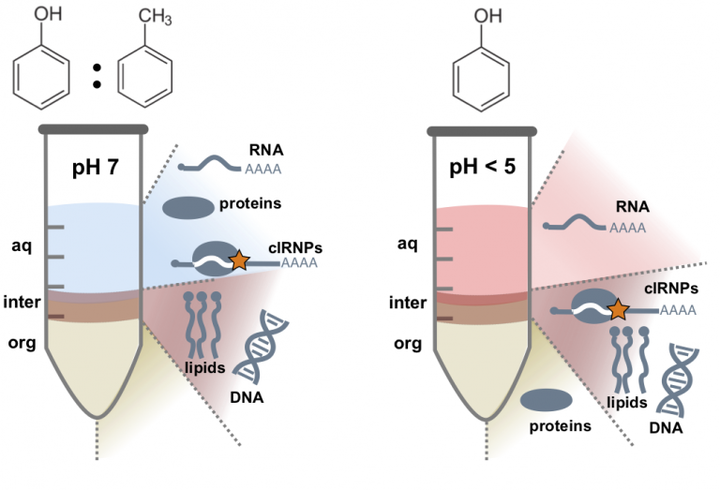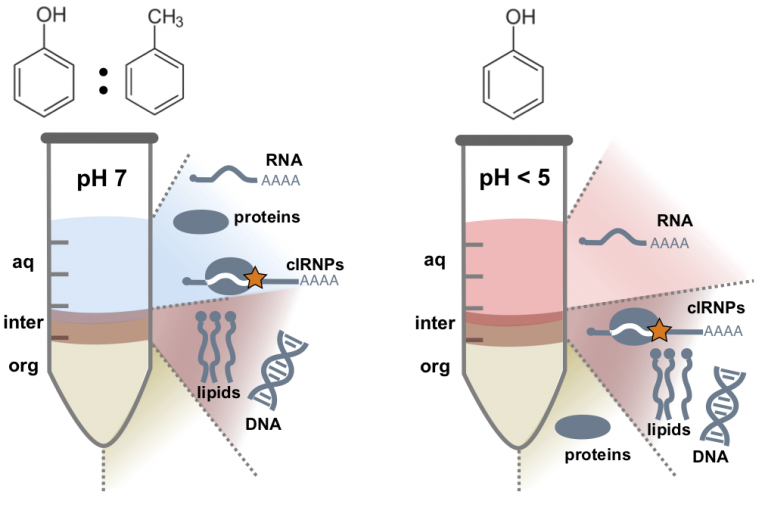PTex

PTex - the method
We developed PTex (Phenol-Toloul extraction) as a new method to purify RNA-protein complexes (RNPs) from any source of biological material. RNA and proteins in direct contact can be covalently cross-linked by short wavelength UV light. However, the method is relatively inefficient and a central question is: How the get rid of the free (non-crosslinked) RNA and proteins, and purify only cross-linked complexes?

- Single step conditions: First, chaotropic conditions and ionic detergents are employed to denature cellular components, followed by a biphasic extraction using the organic compound phenol. During this treatment, nucleic acids are specifically enriched in the aqueous phase. Furthermore, the pH during ex- traction allows to control if DNA and RNA (neutral pH) or only RNA (acidic pH) accumulate in the aqueous phase (right panel)
- Phenol-Toluol conditions: Here RNA, proteins and cross-linked RNPs (clRNPs) are accumulating in the upper aqueous phase while DNA and membranes are predominantly found in the interphase (left panel)
We then combine both versions (PTex) to remove free proteins and free RNA. Unlike other protocols, our approach is completely unbiased and does not rely on a specific tag or RNA sequence.
PTex - the papers
Our paper on PTex has been published in Nature Communications . A more in-depth discussion is available in our latest Methods paper and a review describing PTex and two other, similar techniques in Current Opinion of Chemical Biology .